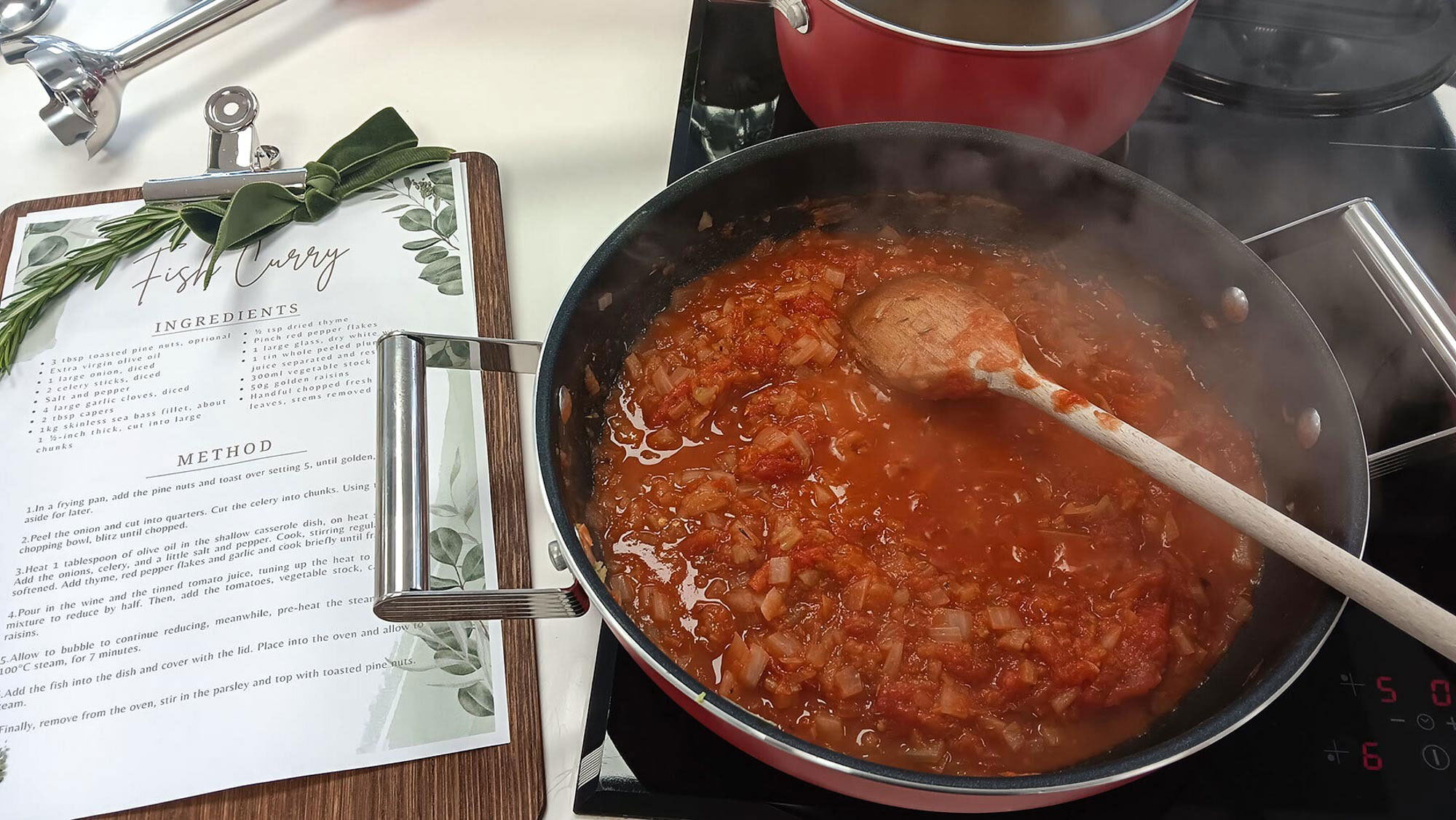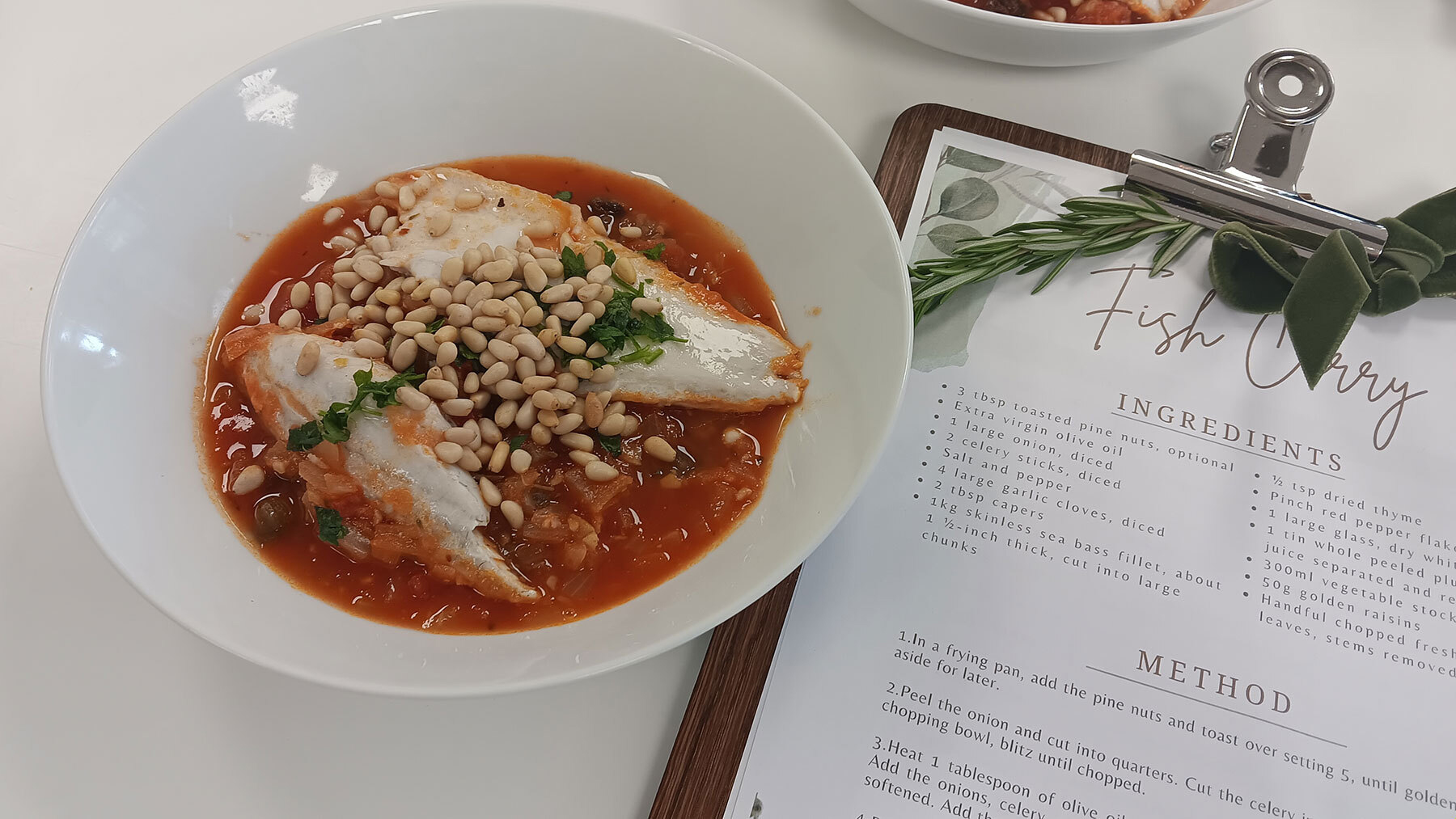I used an induction cooktop for the first time — here are 3 things I discovered

It's undeniable that induction cooktops are some of the smartest appliances you can buy for your kitchen. They're sleek, safe, and energy-efficient, but for those of us who have been working with an electric or gas stove for years, deciding to make the switch is a big commitment.
I’ve always used a gas range to fry, boil, and simmer food, but a recent trip to SMEG HQ gave me the opportunity to try out a market-leading induction cooktop for the first time. Although SMEG is known for making some of the best refrigerators, I was less familiar with their electric ranges and induction cooktops before this trip, so when I was set loose in the brand's test kitchen to make a meal from scratch, I got the chance to try all of their built-in appliances hands-on.
Having relied on my trust gas range for years, I was interested to discover how induction cooking would compare. Would it be intuitive, what results would it give, and would I prefer induction cooking to gas? To find out, I took up my station in SMEG’s kitchen and set to work making a sauce for a fish curry, using its Universal induction cooktop. However, if you're looking for a budget version you could try IKEA's TILLREDA portable induction cooktop.
You might also be interested in reading I love my gas range but this portable induction cooktop might have converted me — here's 5 reasons why and induction vs gas cooktop: Which is best for you.
1. The temperature control takes some getting used to — but not long

Being familiar with a gas range, I was used to seeing the size of the flame to indicate whether the heat is high or low. However, with the induction cooktop, the balance between the settings was more difficult to judge without that visual clue. However, this is no different than getting used to using an electric stovetop.
I started by toasting some pine nuts in a pan and set the heat to a mid-range temperature, not wanting them to burn. There was certainly no chance of that as the heat was consistent and gentle, and if anything, I could have turned the heat up slightly. If I’d reverted to my gas stovetop, I know the pine nuts would have caught and burnt within a few seconds. I also felt safe leaving the pine nuts on the cooktop without having to stand over them, meaning I could get on with preparing the rest of the dish.
2. It's great for sauces

Having toasted the pine nuts without burning them, I moved on to frying onions and celery for the base of the curry sauce. I was getting hungry by this point! Again, the heat was consistent across the pan’s whole base, and I could fry them successfully without ending up with a charred mess. I also noticed how responsive it was when turning up or down the heat.
Get instant access to breaking news, the hottest reviews, great deals and helpful tips.
After adding some herbs, spices, and seasoning, I poured in wine and tomatoes, sprinkled in capers and raisins, and allowed the sauce to bubble and reduce by half. At this point, I was particularly impressed with the induction heat, as I could leave the pan to simmer away on a very low heat without having to hover over it, just coming back to stir it occasionally. I wouldn't have been able to achieve this low heating setting on my gas range.
Although I was only using lower heat settings, induction cooking also offers a quick boil option. You should expect to boil a pint of water in one minute. And while it heats quickly it cools down rapidly, meaning you can avoid the issue of contents boiling over, if you manage to turn the heat down in time. Precision is a game changer — you can even melt chocolate within the base of a pan without the fear of it burning, which isn’t possible with gas without using a Bain Marie.
The ability to cook sauces well was also highlighted by 6 culinary pros when asked about their favorite features of induction cooking.
3. It's easy to clean and safe to use

My gas range is forever getting into a mess, although it’s probably partly down to the user! The heat is difficult to control, resulting in pasta or rice water constantly boiling over and leaving sludgy liquid on the base of the range and pan racks. I curse every time I have to clean it.
However, when using an induction cooktop, with more control over the heat, there is less likelihood of liquid boiling over. And when you do need to clean the cooktop, the flat glass surface is easy to wipe over. There are no awkward nooks and crannies or pan racks to clean.
Also, as the heat only gets hot under the pan, food splatters don’t burn onto the cooktop’s surface, like on a gas or radiant-electric cooktop. The induction cooktop simply needs a wipe with a damp cloth.
This element also makes it safe, as with no naked flame or hot plate to deal with, you can touch the surface of the cooktop without burning yourself. And if you have children in the house, there’s no danger of them burning themselves if they fiddle with the controls or touch the cooktop. Again, it's only the pans that will get hot.
However there can be few reasons why your induction cooktop may not be working, that are to do the pan type, size and whether they have residue on the base, which can interfere with the heat transfer.
Induction cooking — how does it work?
Unlike ceramic cooking zones, induction cooktops work based on direct contact with pans. Although it’s a very different concept to using a gas or traditional electric cooktop, the idea isn’t as far-fetched as it seems.
Induction cooking is based on magnetic fields, with each element on the cooktop generating a magnetic field. This induces heat onto the material in the base of the pan, which must be magnetic to work.
Clare Edwards, head of consumer & retails events at SMEG, explains, “The pot itself becomes the element that cooks the food. As a result, energy efficiency is maximised, and heat loss is minimized, since only the base of the pan is heated.”
For induction cooking to work, your pans must contain ferrous material in their base — cast iron and some types of stainless steel pans will work. You can check if your pans are suitable by seeing if a magnet attracts to the base. You might also be interested in reading Does an induction cooktop work with cast iron pans?
Plus, here are 5 things you need to know before buying an induction cooktop, and I've discovered the best thing about induction cooking — and you've got to try this yourself.
More from Tom's Guide

Camilla is the Homes Staff Writer and covers everything to do with homes and gardens. She has a wealth of editorial experience, mounting over 30 years, and covers news and features, tests products for reviews and compiles buying guides.
Her work has appeared in business and consumer titles, including Ideal Home, Real Homes, House Beautiful, Homebuilding & Renovation, and Kitchen & Bathroom Business. She’s even appeared on the cover of Your Home, writing about her own house renovation.
Although she’s obsessed with decorating her home, she also enjoys baking and trying out the latest kitchen appliances. But when she’s not inside, you’ll find her pottering about in her yard, tending to her vegetable patch or taking in her prized hydrangeas.
